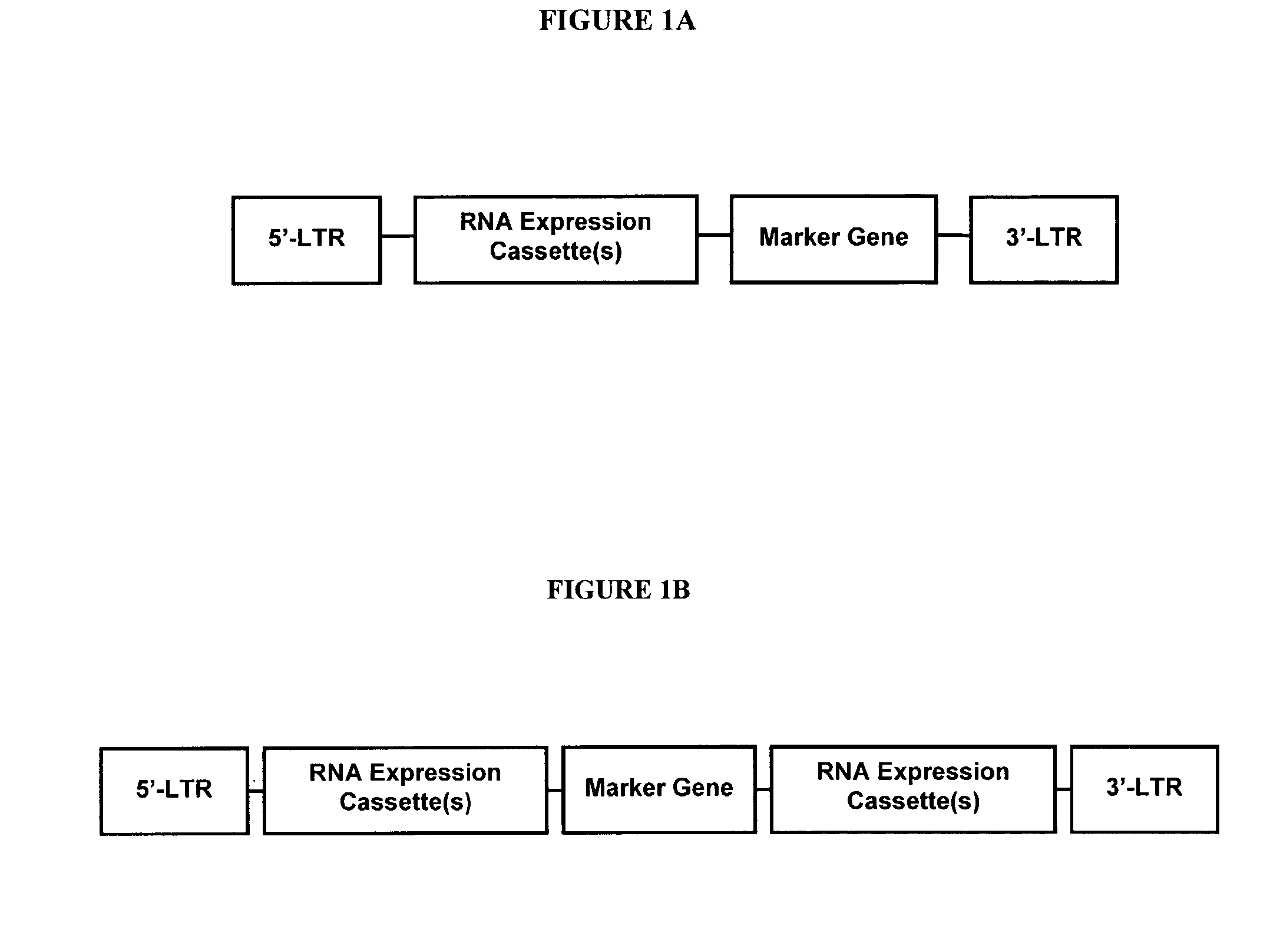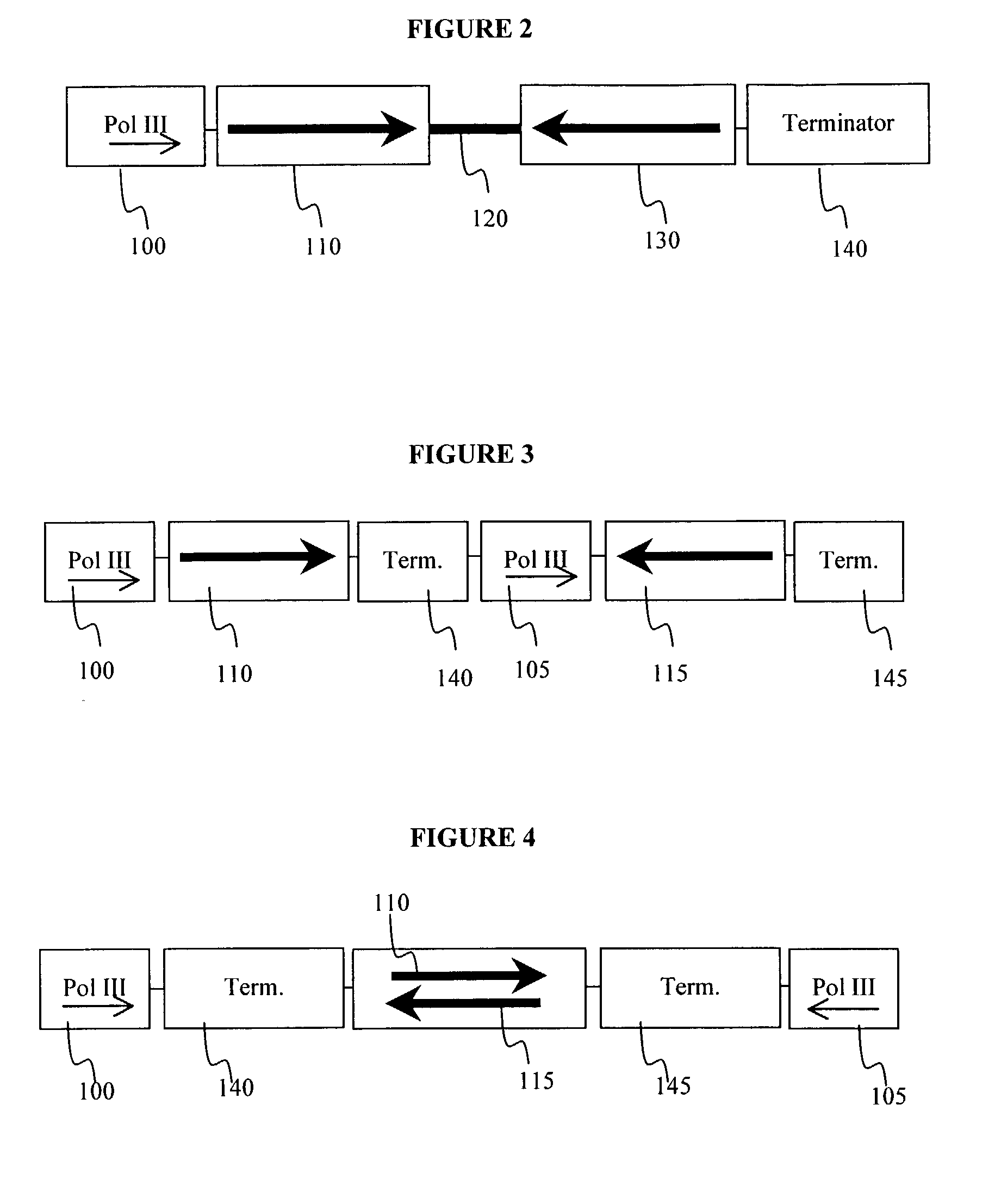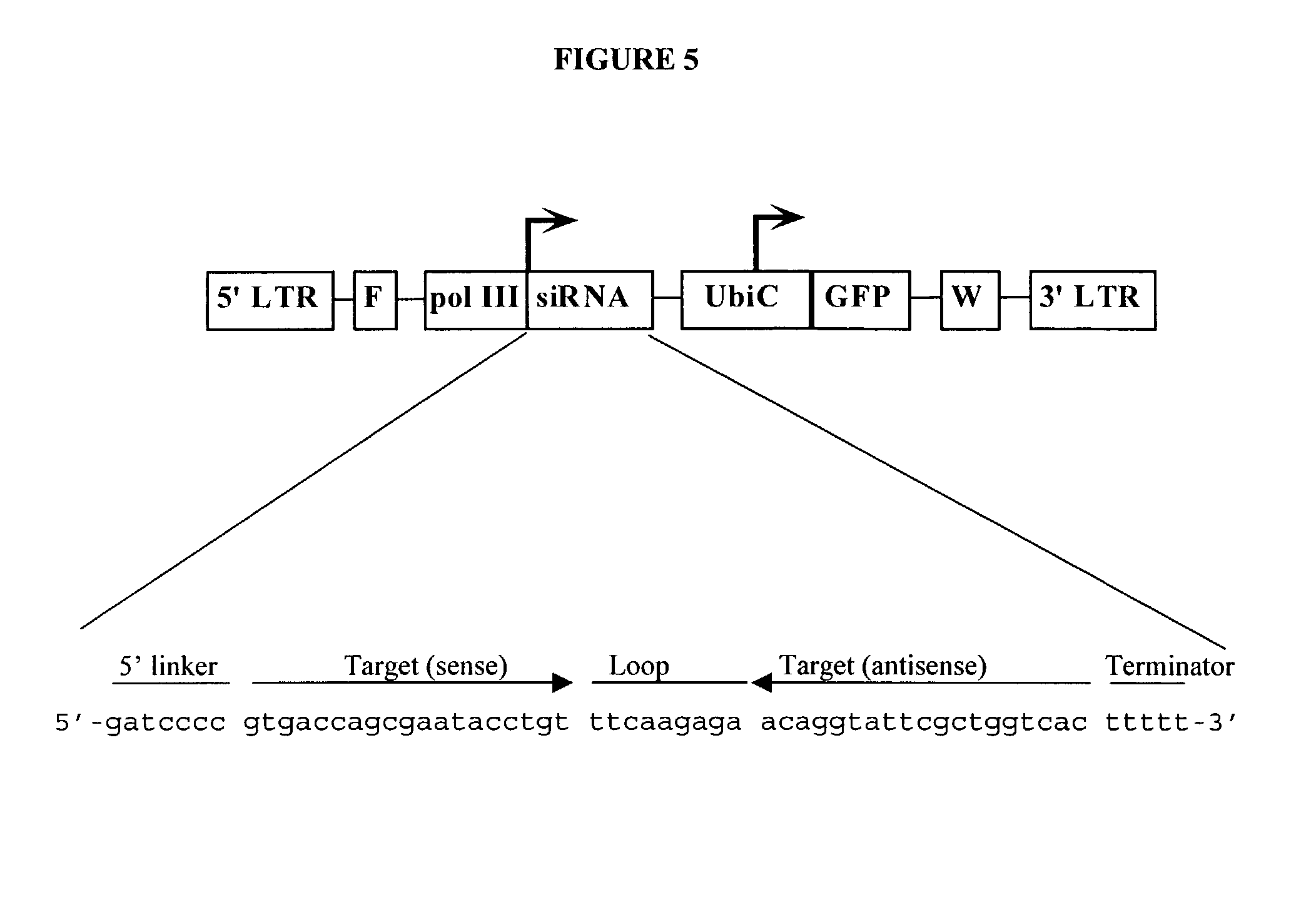Method for expression of small antiviral RNA molecules within a cell
a technology of rna molecules and cells, applied in the field of cell-based expression methods, can solve problems such as limitations in applicability, and achieve the effect of preventing ltr sequences
- Summary
- Abstract
- Description
- Claims
- Application Information
AI Technical Summary
Benefits of technology
Problems solved by technology
Method used
Image
Examples
example 1
[0145] According to this example, an siRNA lentiviral construct against lacZ gene was constructed by insertion of the siRNA expression cassette into the Pacd site of HC-FUGW vector (FIG. 5). HC-FUGW vector (SEQ ID NO: 3) contains a GFP marker gene driven by human Ubiquitin promoter for tracking transduction events. The vector also contains an HIV DNA Flap element to improve the virus titers, and WPRE for high level expression of viral genes. The siRNA expression cassette is composed of a pol III promoter and a small hairpin RNA coding region followed by a pol III terminator site. The pol III promoter is derived from -240 to -8 region of human H1-RNA promoter and is connected to the downstream RNA coding region through a 7 base pair linker sequence to ensure that the transcription is precisely initiated at the first nucleotide of the RNA coding sequence. The small hairpin RNA coding region contains a 19 nt sequence corresponding to 1915-1933 region of the sense strand of lacZ gene co...
example 2
[0146] This example demonstrates the transduction of cultured mammalian cells with a retroviral vector (FIG. 6). The retroviral vector encoding a small hairpin RNA molecule described in Example 1, was used to transfect cultured mammalian cells that express lacZ, and caused a profound decrease in the expression of the test gene lacZ. The lacZ siRNA virus was produced by cotransfection of the retroviral vector, a helper virus plasmid and VSVg expression plasmid in HEK293 cells. The virus particles were harvested from the cell culture supernatants and concentrated by ultracentrifugation. The concentrated virus preparations were used to infect either mouse embryonic fibroblasts (MEF) or HEK293 cells which harbor both lacZ and firefly luciferase (Luc) reporter genes. Infection was monitored by the GFP signal which is expressed from the marker gene cassette of the viral vector. Under the conditions of this experiment, >98% of the test cells were GPF+ and thus successfully transduced. The ...
example 3
[0149] This example demonstrates the generation of transgenic animals that express an siRNA molecule encoded by a lentiviral vector. The expression of the lacZ specific siRNA construct described in Example 1 resulted in extensive suppression of lacZ activity in ROSA26+ / - mice. ROSA26+ / -animals carry one copy of an ubiquitously expressed lacZ reporter gene. The lacZ siRNA virus preparations described in Example 2 were used for perivitelline injection of ROSA26+ / - single cell embryos obtained from hormone primed C57B1 / 6 female donors.times.ROSA26+ / + stud males. The injected single cell embryos were subsequently transferred into the oviduct of timed pseudopregnant female recipients. Embryonic day 15.5 to 17.5 (E15.5-17.5) fetuses were recovered from the surrogate mothers. Successful transgenesis was scored by positive GFP signal observed with the fetuses under fluorescent microscope. Protein extracts prepared from the limb tissues of the fetuses were used for the LacZ chemiluminescent ...
PUM
| Property | Measurement | Unit |
|---|---|---|
| length | aaaaa | aaaaa |
| structure | aaaaa | aaaaa |
| Green Fluorescent | aaaaa | aaaaa |
Abstract
Description
Claims
Application Information
 Login to View More
Login to View More - R&D
- Intellectual Property
- Life Sciences
- Materials
- Tech Scout
- Unparalleled Data Quality
- Higher Quality Content
- 60% Fewer Hallucinations
Browse by: Latest US Patents, China's latest patents, Technical Efficacy Thesaurus, Application Domain, Technology Topic, Popular Technical Reports.
© 2025 PatSnap. All rights reserved.Legal|Privacy policy|Modern Slavery Act Transparency Statement|Sitemap|About US| Contact US: help@patsnap.com



